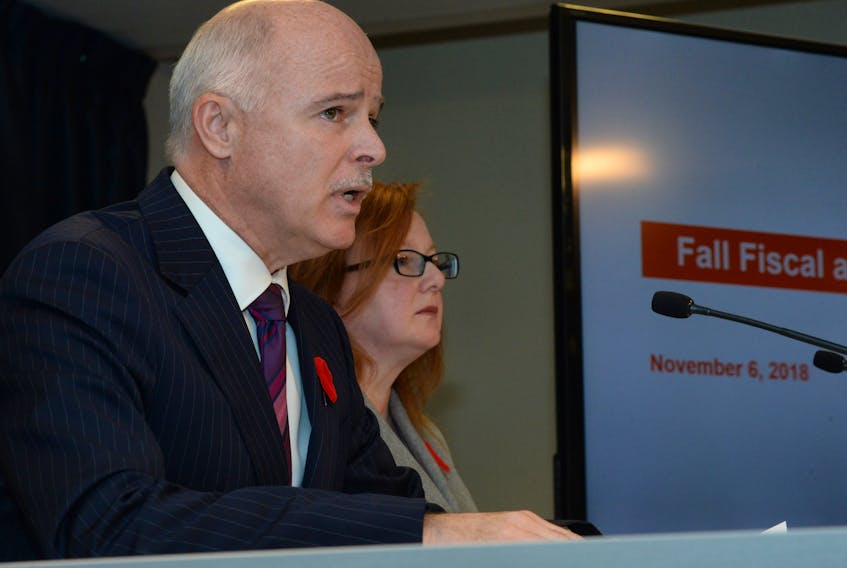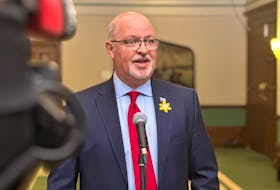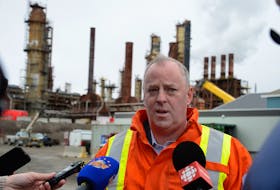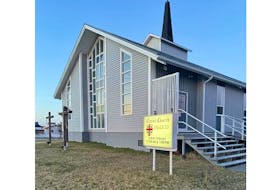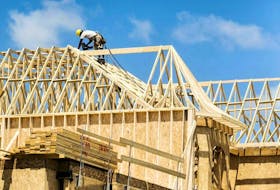A more expensive barrel of oil has given a bump to the provincial economy, reducing the projected deficit to $547 million from the $682 million projected in April.
Finance Minister Tom Osborne gave an update on the province’s financial situation Tuesday, updating the numbers from the 2018 budget.
While revenues are up, spending remains more or less the same. The province is still spending $8.35 billion in fiscal 2018-19.
Osborne says finding $6 million in savings on that amount of spending is “a huge accomplishment.”
“To hold expenses steady is a huge accomplishment, when you factor in the consumer price index,” said Osborne.
The increased revenue means the government is going to borrow less this year, as well. Instead of borrowing $1.45 billion, borrowing will be reduced by $200 million, to $1.25 billion.
As a result, the total net debt for the province will also see a decrease, down to $15.37 billion from $15.53 billion. On a per capita basis, Newfoundland and Labrador still leads the country in net debt.
Richard Alexander, executive director of the Newfoundland and Labrador Employers Council, doesn’t share Osborne’s optimism on that front.
“There hasn’t been any appreciable change in spending levels,” said Alexander.
“Government has done things on severance and wage freezes and things like that, but when you’re borrowing that much money, your debt servicing costs are increasing so much that we have less money to put into health and education.”
The Employers Council also released a public opinion poll on Tuesday, showing just eight per cent of the province’s population is confident the government will be able to meet its 2022-23 target of returning to surplus.
The survey found that 64 per cent of residents are concerned about the fiscal state of the province, with 60 per cent saying the government needs to find a way to curb spending.
The 2018 budget estimated a barrel of oil would cost $63 per barrel. The average price so far has been $75.75. Every dollar increase in the price of oil means another $19.9 million for the provincial coffers.
Because of the increase, Osborne says, the government is increasing its oil price estimate by $11 — now up to $74 per barrel.
While the oil estimate creeps upward, Osborne says he’s still using an “abundantly prudent” estimate.
“We were advised to use a higher oil prediction in budget 2018. We refused to do that because that’s what the previous government did,” said Osborne.
“I still think that at $74, we are abundantly prudent.”
The previous Tory government was roundly criticized for overestimating the price of oil.
Osborne says oil revenues represent 15 per cent of provincial revenues, down from 30 per cent in 2011.
While that number is down, Alexander says the reduced percentage of oil revenue is indicative of just how low oil prices have dropped since 2011.
“Back in 2011, oil was trading at around $111 per barrel. The price of oil drops, that means it’s less as a percentage of total revenue of the province,” said Alexander.
“What that’s been replaced with is a billion-dollar tax increase from the 2016 budget and being replaced with borrowing.”
The unemployment rate is more or less steady at 14.5 per cent.
Tory finance critic Keith Hutchings says the government is relying on oil revenues, something the Liberals criticized the previous government for.
“Any improvement here is related to oil revenues,” said Hutchings.
“There’s nothing here that indicates that this policy, this framework, anything is going to be met.”
NDP Leader Gerry Rogers says just because people aren’t rioting in the streets like they were in the 1930s over the fiscal state of the province doesn’t mean things are better.
“Go down to the Gathering Place and tell me that what people are experiencing with the cut of the adult dental program, the cut of services including bus passes … you tell me that doesn’t look like the 1930s, when people can’t afford teeth,” Rogers said.
The gross domestic product (GDP) declined 2.8 per cent, a larger decline than expected in the 2018 budget, which estimated a 0.8 per cent decline in GDP.
The population decline continues. The government’s estimate of a 0.6 per cent decrease in population is still right on target.
One major difference in the budget estimate to Tuesday is housing starts. The government had predicted a 10.2 decrease in housing starts, but the updated data shows a flat market, with growth expected by 0.1 per cent.
The Employers Council survey randomly sampled 401 adults age 18 or older across Newfoundland and Labrador. Overall results are accurate to within ±4.9 percentage points, 19 times out of 20.
Twitter: DavidMaherNL
Related stories:
Realism trumps optimism following Newfoundland and Labrador fiscal update
Budget 2018: Newfoundland and Labrador struggles with debt, government forecasting surplus in 2022

